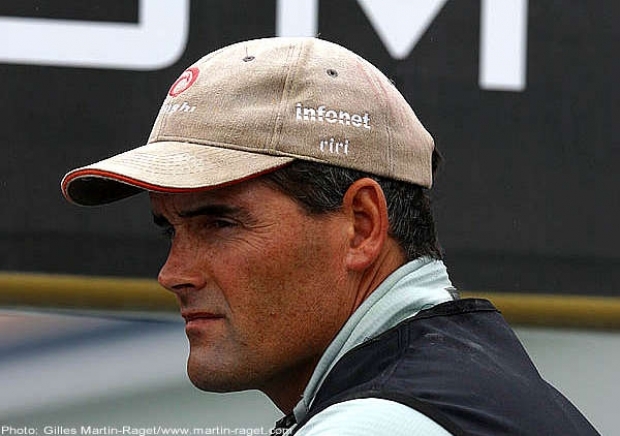Your feedback
Wednesday June 23rd 2004, Author: James Boyd, Location: United States
Following on from our story about
Russell Coutts' probable departure
from Alinghi, Lehel Garami writes from California:
It's sad to see this much turmoil this early on for Coutts and it can't be good for Alinghi for the next Cup. If Coutts can get out of his contract it will become very interesting to see what he can bring to another team. Personally I'd enjoy seeing this happen.
Either way it goes I think Alinghi will be strong but will lose the Cup to another team without Coutts' full attention which is already lost.
From Brixham, Devon, Vikki Penney of Seagal UK writes:
Sounds like Russell Coutts has been chucking his toys out of his pram instead of just being the excellent sailor he is. There is no room in this fantastic sport for David Beckham act-a-likes or primadonnas. Russell Coutts needs to concentrate on his helming before he becomes an enforced landlubber...
From London, Jim Carver writes:
The Coutts shenanigans looks to me like a clash of big egos after more of the America’s Cup pie. Russell Coutts looks like he’s being the greedy one here but I reckon Michel Bonnefous is the culprit.
There was probably some sort of deal done to let Russell have some input and control over the event side if Alinghi won the Cup. Now they have and Bonnefous has taken the event side under AC Management under his strict control, and left Coutts out of it.
But tough I say! If you want to swim with the big sharks in the business then you have to be a big shark yourself or be able to swim pretty fast. Or as Coutts is probably doing, getting his sharky lawyers onto the case.
From the States, designer Jim Donovan gives his views on our look at the Transpac 52 class :
Your recent article on the Transpac 52 fleet and the explanation of the rules governing the fleet is refreshingly well-informed and accurate.
Your article points out, "Transpac 52 is an IMS-based box rule . . . Significantly the TP52 rule requires boats to have an IMS measurement certificate and therefore be subject to procedures such as wanding."
It’s possible that many of your readers might come away thinking that a Transpac 52 is an 'IMS yacht'. To the contrary, a TP52 receives an unfavourable handicap in the current version of the IMS, making it difficult to race competitively in IMS races.
The Transpac 52 fleet’s relationship to the IMS rule is a practicality for this developing class. A TP52 holding an IMS certificate easily complies with most yacht racing rules and regulations, allowing the yacht to compete in regattas world-wide. Until now, there have not been enough boats built to have a separate start for the TP52 Class. The fleet has shown up to regattas, racing their TP52s boat-for-boat within fleets and using whatever rating system the race organizers have dictated.
In theory, the IMS measurement has many benefits that work well for measuring a TP52;
- Hull dimensions are confirmed to meet the TP52 Rule limitations
- VCG and LPS (Limit of Positive Stability) are determined
- Rig Dimensions, Rig Weight & Rig VCG are measured
Unfortunately, the IMS procedures intended to accurately measure a yacht’s hull, appendages and determine the stability characteristics have shown a weakness in achieving repeatable and/or sensible measurement results. Re-measurement will show variances in hull measurements where no alterations have been made. Stability measurements often change contrary to an expected result. The measurement procedures are far from perfect.
The class membership recognises the problem. Most of the owner’s have dealt with IMS measurement headaches with their previous yachts and the TP52 Class is taking steps to make improvements. If laser scanning hull measurements prove more accurate, and the class can eliminate potential errors from inclining experiments, there is a good chance that the IMS measurement component of the TP52 rule could remain intact. If these improvements do not appear soon enough, the future could see IMS measurement replaced by TP52 Class measurement procedures.
These issues and any changes to the TP52 Rule will be decided by the yacht owners. The recent owners' meeting adopted administrative measures requiring any rule change to be approved by at least 80% of the owners. This 'super-majority' requirement will certainly make it difficult to make unnecessary changes to the rule, achieving the owner’s goal to have an extremely stable rule.
Despite the disadvantages of racing within unfavourable rating systems, the yachts have attracted new owners because of their remarkable performance. Credit goes to the original owners that have endured the start-up years, and to the new owners that have recognised the potential of these yachts and have joined the fleet.
| If you have any views on these topics or want to vent your opinions on any other matters concerning our sport, please email thedailysail here |









Latest Comments
Add a comment - Members log in